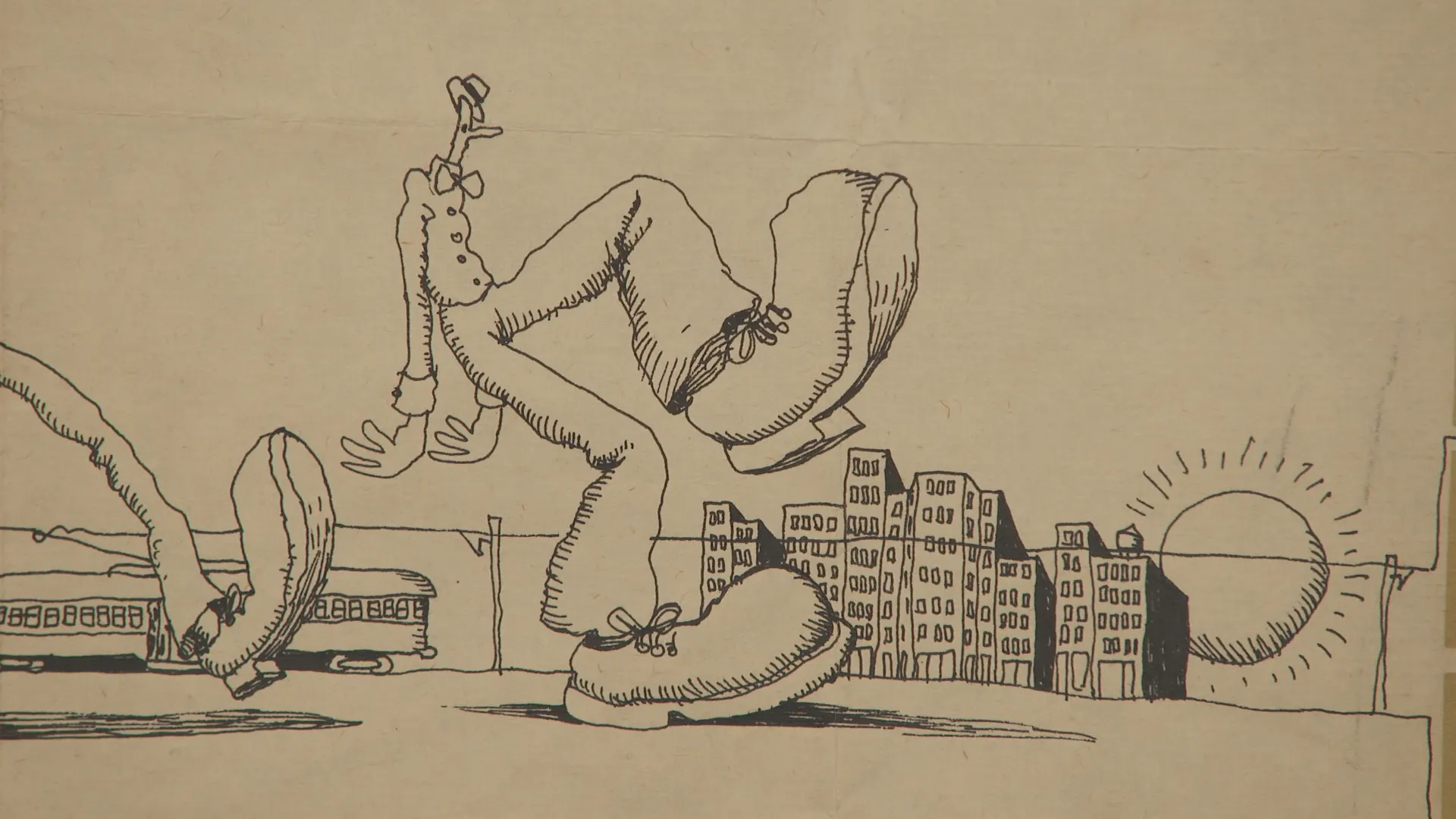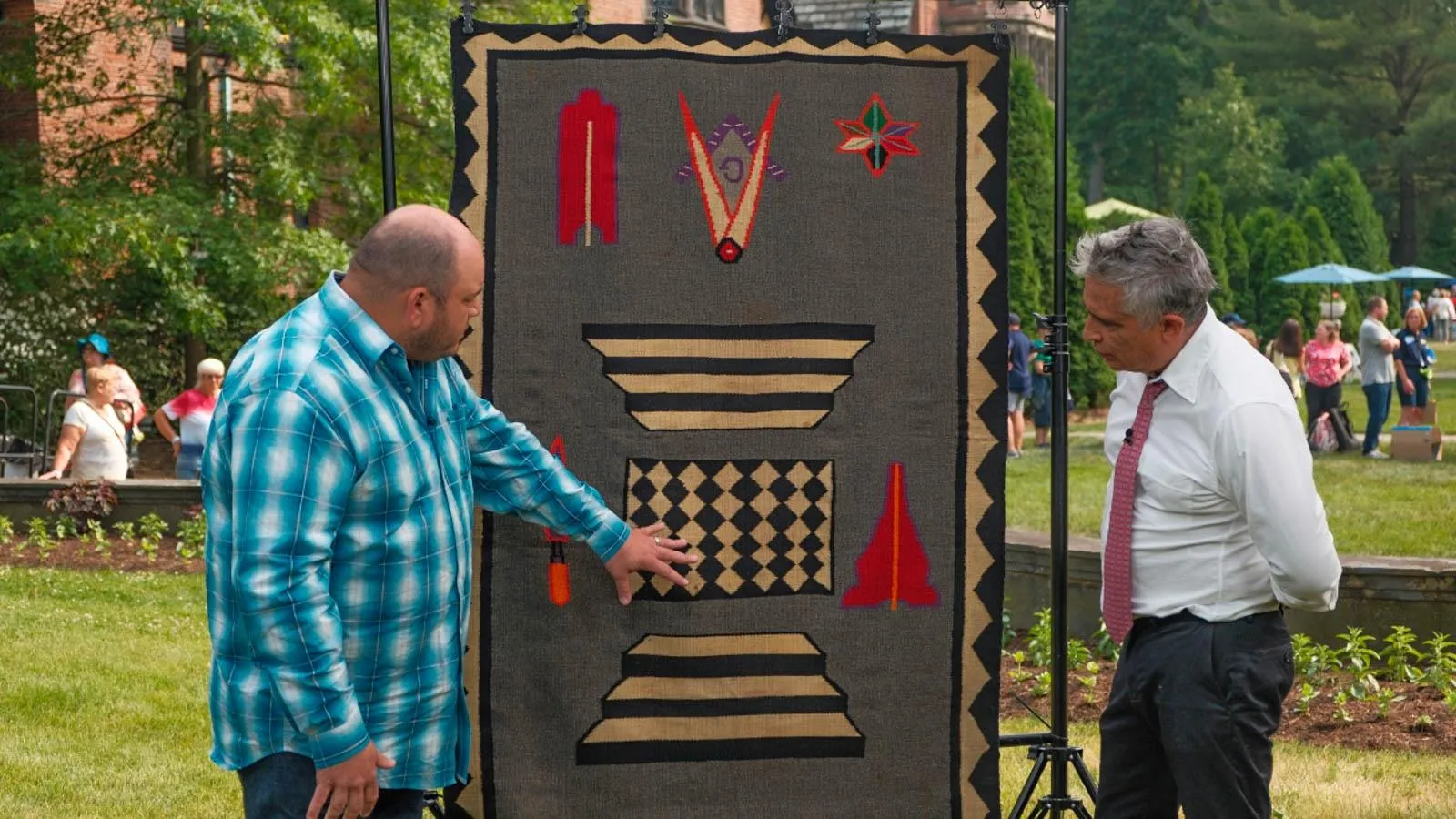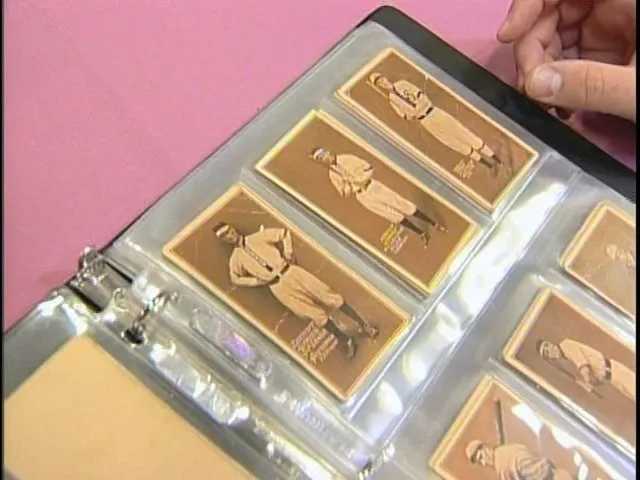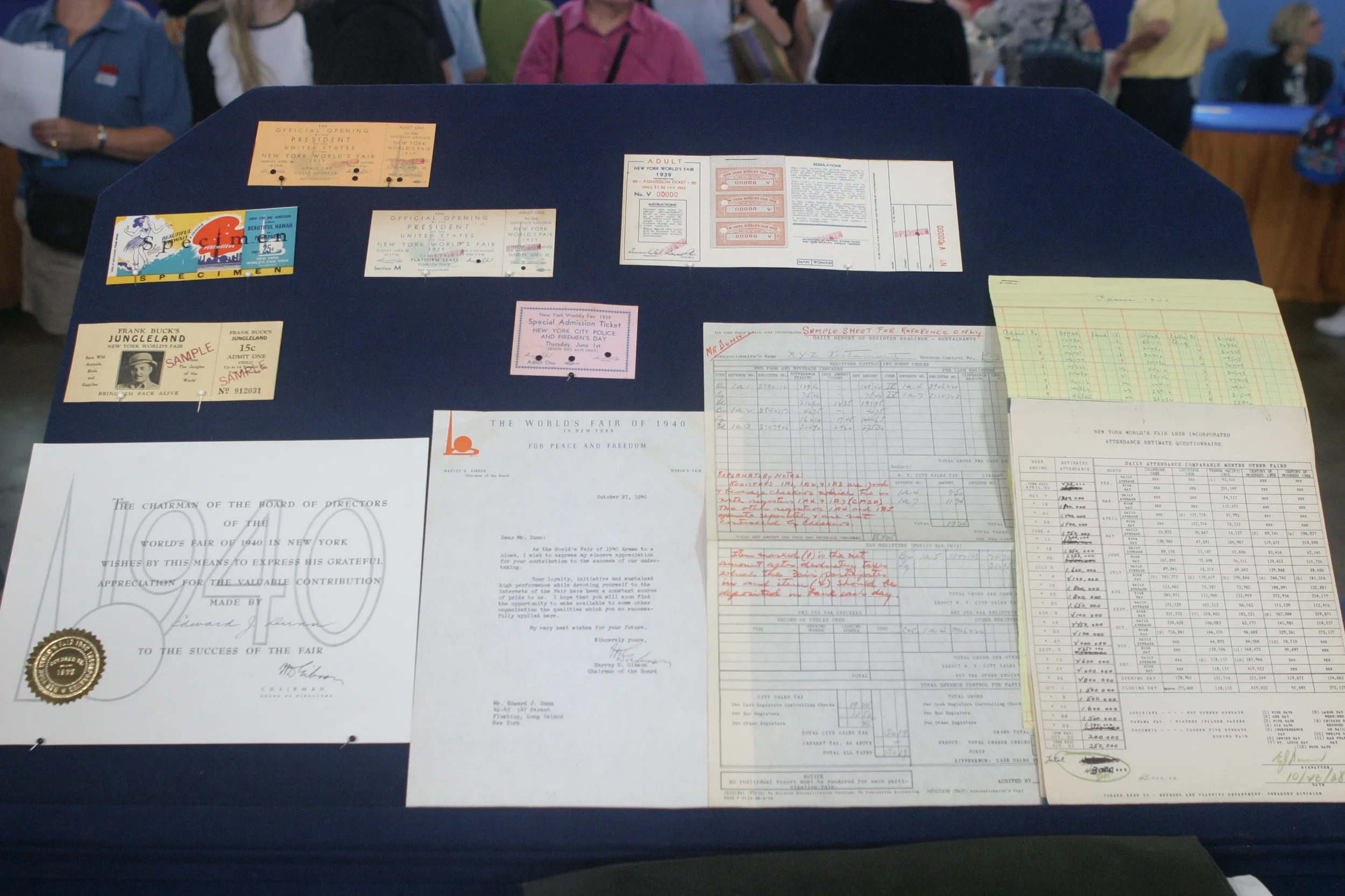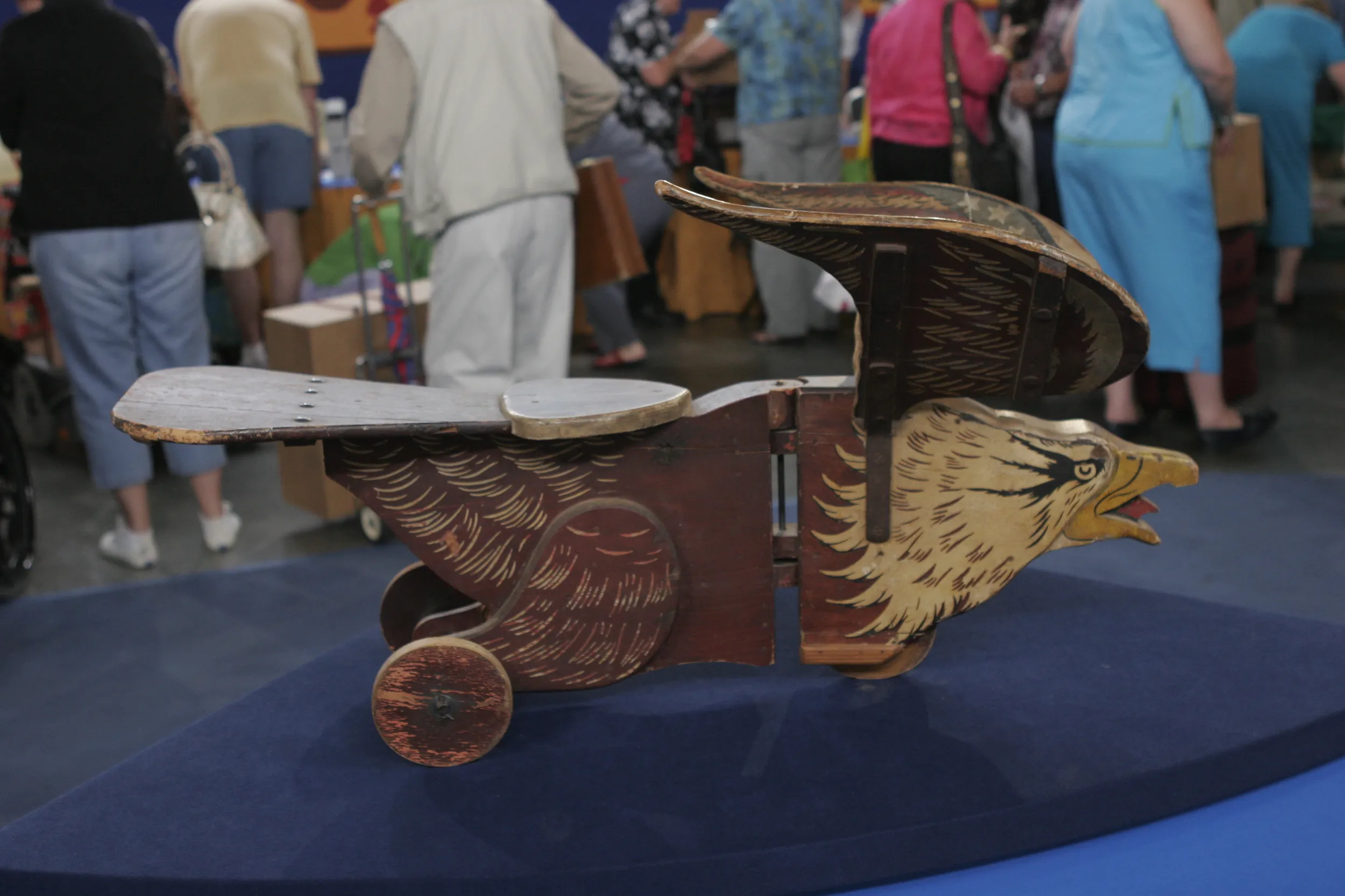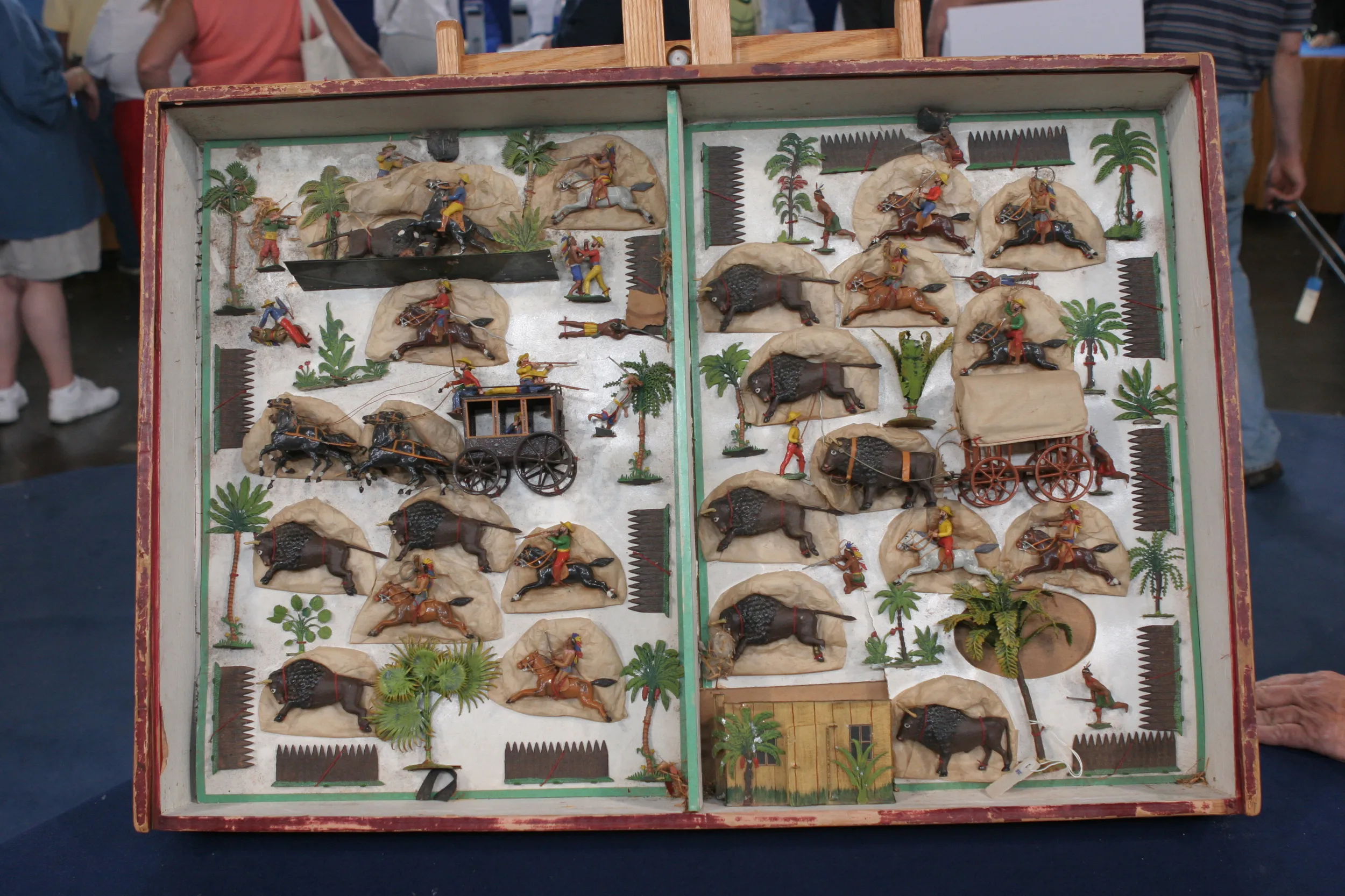GUEST: Robert C, Crumb did the drawings on these placemats. He worked with Walter Lee, my, my father-in-law...
APPRAISER: Mm-hmm.
GUEST: ...at American Greetings...
APPRAISER: Mm-hmm.
GUEST: ...in the '60s and the '70s. They were friends. My father-in-law would go out to a restaurant with Robert Crumb, and Ralph Shaffer, too, 'cause he's on there.
APPRAISER: Mm-hmm.
GUEST: He was doodling before the food came.
APPRAISER: Mm.
GUEST: And how it's been explained to me is that Walt liked it.
APPRAISER: Mm-hmm.
GUEST: And he's, like, "I'm going to keep that."
APPRAISER: Mm-hmm.
GUEST: So he appreciated it. I mean, Walt was an artist, and he appreciated
another artist.
APPRAISER: Mm-hmm.
GUEST: And I think Robert probably would've just left 'em behind at the table. And they've just been sitting in a closet.
APPRAISER: Did, did he ever give you any stories about Robert Crumb?
GUEST: Uh, yeah, probably ones I couldn't say. (both laughing) Oh… He talked, um, my father-in-law, uh, to move out from Ohio to California.
APPRAISER: Mm-hmm.
GUEST: And it was very hippie, and, and they had good times.
APPRAISER: Robert Crumb is one of the most influential artists of the 20th century in the world of comics. He is the godfather of the underground comic movement. Robert Crumb has a very recognizable cartoon style. When you see it, you know it. It reminds me of the '60s,the Haight-Ashbury, hippies.
GUEST: Yes.
APPRAISER: But back, earlier than that, he was working for American Greeting Card Company.
GUEST: Right.
APPRAISER: Making wholesome family cards, which is a significant change from his later career. In the late '60s, he moved out to San Francisco and started the first underground comic, called "Zap."
GUEST: Mm-hmm.
APPRAISER: And it was, how shall we put it? A little controversial. There was nudity, there was vulgarity. But it really captured the spirit of the times. And it was the first commercially successful underground comic product. And Robert Crumb went on to do other comics. There were cartoons that he made and directed. On this particular placemat, you've got a bunch of design sketches for different types of tombstone or mantel radios. We've got a lovely frog, uh, being used as bait for a shark. It says here "Ralph Shaffer"?
GUEST: Yeah, and, uh, my husband told me yesterday...
APPRAISER: Mm-hmm.
GUEST: ...that Ralph did the shark...
APPRAISER: Mm-hmm.
GUEST: ...and Robert did the frog.
APPRAISER: Of these three placemats, the one in the lower right-hand corner is the best by far-- um, the art is instantly recognizable as Crumb, with the trademark big feet. We can see Robert Crumb's signature. That is something he doesn't often do.
GUEST: Mm-hmm.
APPRAISER: Most of his work is unsigned. These are very early. 1964, 1965. A couple of years before he had published his great comics.
GUEST: Mm-hmm.
APPRAISER: I can't think of much art that's around that is this early of his.
GUEST: Oh, sweet.
APPRAISER: For this grouping, we would estimate, if it was to come up to auction, we would put an auction estimate of $8,000 to $12,000.
GUEST: Whoa-- wow. Uh, okay, wow. I, I actually said to somebody today, "Probably what I have is, maybe one of the drawings is worth $300." (chuckling)
So, um… (guffaws)
APPRAISER: Ooh.
GUEST: Wow. I will be very excited to tell my husband that.
APPRAISER: (chuckles) I'd put an auction estimate of $5,000 to $8,000 on this one alone. But I'd really keep them all together as a set, because they all kind of tell a story of Robert Crumb before he went to San Francisco.

